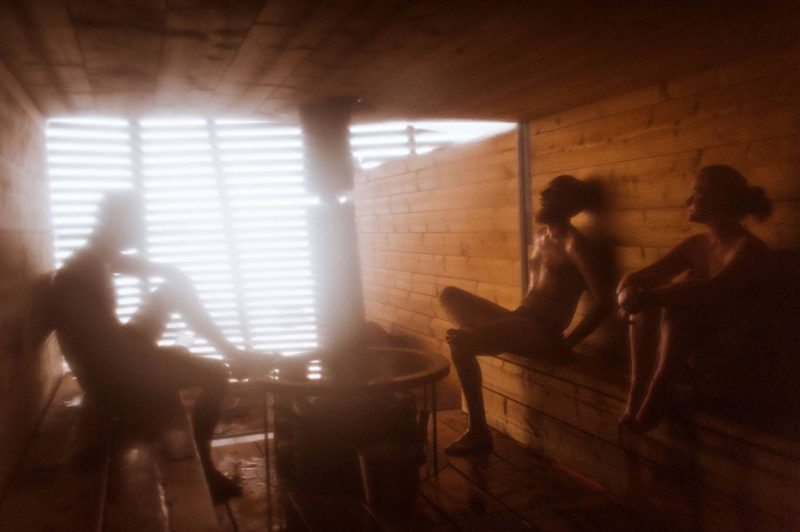When the wind starts to bite in Helsinki, there’s only one place to go: the sauna. Since around 7000 BC, Finns have been warding off the cold by relaxing in steamy rooms where time comes to a standstill, stress melts away and the mind is left to drift off with the vapors.
Despite always remaining a cornerstone of Finnish culture, public saunas saw their numbers dwindle in the late 20th Century, especially around Helsinki.

Urban sprawl and development led to many of Finland’s oldest and proudest public saunas closing their doors, only to be replaced with yet more monotonous apartment blocks.
Today, that trend is reversing. In part due to international interest, saunas are making a comeback, with new public saunas popping up across the capital. For a country of just 5.4 million people, Finland now has 3.3 million saunas – more than one for every two Finns.
With so many saunas to try, Loyly definitely stands out thanks to its traditional-style smoke sauna, and focus on environmental sustainability.
For one, it’s the only sauna in Finland that has been accredited by the Forest Stewardship Council, which certifies all wood is sourced from responsibly-managed forests.

All electricity used on site is from wind and solar sources, while the restaurant deals largely in locally-sourced produce.
Saunas
Loyly has two large public saunas, along with private rooms ideal for groups.
The Smoke Sauna
The authentic Finnish experience. Traditional Finnish saunas have always been created by burning generous amounts of wood on a large stove in the center of the room. The smoke is then ventilated out, and the remaining heat used by bathers to stay warm.
Once in decline due to the expertise required to manage, smoke saunas are nonetheless widely considered by Finns to be superior to more modern alternatives.

See for yourself at Loyly’s 18 square meter smoke sauna, which accommodates up to 20 people at a time. Their sauna is well-prepared, and clients are usually a roughly even mix of locals and foreigners.
The sauna itself opens out onto the Baltic, meaning you can take a dip in the frosty waters when the heat gets too much. This is a mixed gender sauna, and because of this the use of bathing suits or a towel is required.
Wood-Fired Sauna
The more modern wood-fired sauna is slightly more spacey, at 22 square meters. Nonetheless, it still seats just 20 people at a time, making it somewhat more comfortable for anyone who appreciates their personal space. Unlike the smoke sauna, this one relies on venting and burning aromatic dried birch wood.
Like the smoke sauna, bathers can jump straight from the wood-fired sauna into the Baltic for a refreshing hit of cold.
It is also a mixed gender sauna in Helsinki, and use of a swimsuit or towel is required too.

Private Saunas
Up to twelve people can fit in Loyly’s private saunas, which come with a private shower and access to both the sea and eating areas.

At the time of writing, the cost was 300-400 euros per two hour visit, depending on whether you book during the week or weekend. For the steep price, you get privacy that’s perfect for group events, which also make these the only nude mixed gender saunas in Helsinki- if the group chooses to do so.
Other Services
While you can’t bring your own, Loyly does have beverages and light snacks available for bathers. For something more substantial, the on-site restaurant is focused on seafood, and has a particularly good brunch menu. Don’t pass by the elk meatballs.

Location
Loyly Sauna is located in the seaside neighborhood of Hernesaari. Once an industrial hub just outside Helsinki, Hernesaari has since become absorbed into the capital – but not without consequences.
De-industrialization left the area without an identity a generation ago, though concerted efforts by the Helsinki government have seen Hernesaari flourishing again as a residential area with an upmarket hipster touch.
The nearby cruise harbor has likewise brought renewed interest to the once-industrial region, which is today one of the most dynamic corners of Helsinki. Here, sleek yachts dock in front of reclaimed waterside factories, juxtaposing Helsinki’s industrial past with swish modernity.
